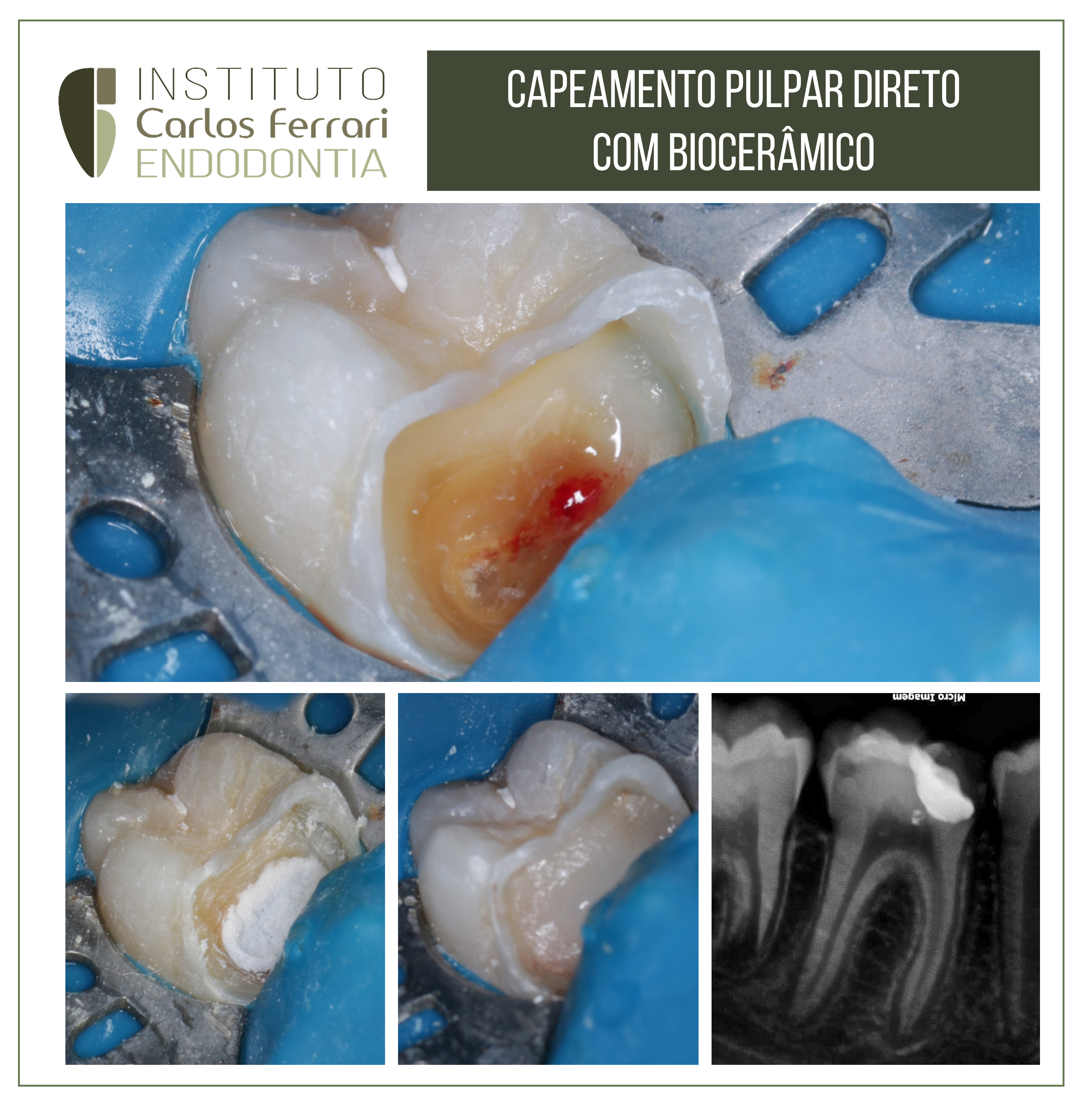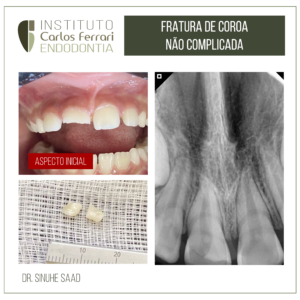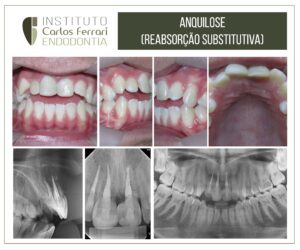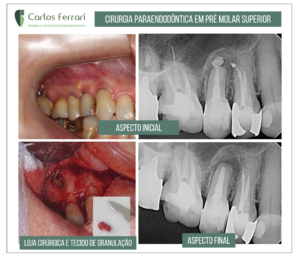Capeamento pulpar direto realizado com biocerâmico (Bio C Repair) em dente permanente de paciente de 15 anos assintomático e sem inflamação pulpar.
Caso conduzido pela aluna Joyce Gandini, de especialização em endodontia da APCD Bragança Pta.
Capeamento pulpar direto com MTA:
As terapias endodônticas em dentes decíduos objetivam a manutenção destes elementos com a finalidade de manutenção do espaço na arcada dentária. Dentre as terapias endodônticas conservadoras, destaca-se a proteção pulpar direta. Este tratamento é um procedimento no qual umapolpa dental exposta é coberta com um medicamento ou material que a protegem de injúrias adicionais, permitindo sua reparação. Tal procedimento é realizado quando ocorre microexposições acidentais da polpa, segundo determinados critérios, como: ausência de sintomatologia dolorosa espontânea, ausência de lesão periapical, idade dentária jovem e rizólise fisiológica inferior a um terço da raiz. Atualmente, a proteção pulpar direta é um procedimento comprovadamente eficaz.
No estudo com dentes de cães, Faraco Jr, Holland demonstraram, por meio de análise histológica, a formação de ponte dentinária em 84,6% dos elementos dentais apósproteção pulpar direta. Neste contexto, o material utilizado em contato com o remanescente pulpar assume relevância,uma vez que é necessário que se mantenha a integridade da polpa radicular. Dentre estes materiais, destacam-se as pastas iodoformadas e de hidróxido de cálcio e o Agregado Trióxido Mineral (MTA).
In: Fidalgo et al. Rev Odontol UNESP, Araraquara, v. 38, n. 6, p. 383-87, nov./dez. 2009
https://www.youtube.com/watch?v=GoV4JybRpi8&list=PLek9BAmgAJf8K1ImjjDiQP9pzj_IGr4fi





